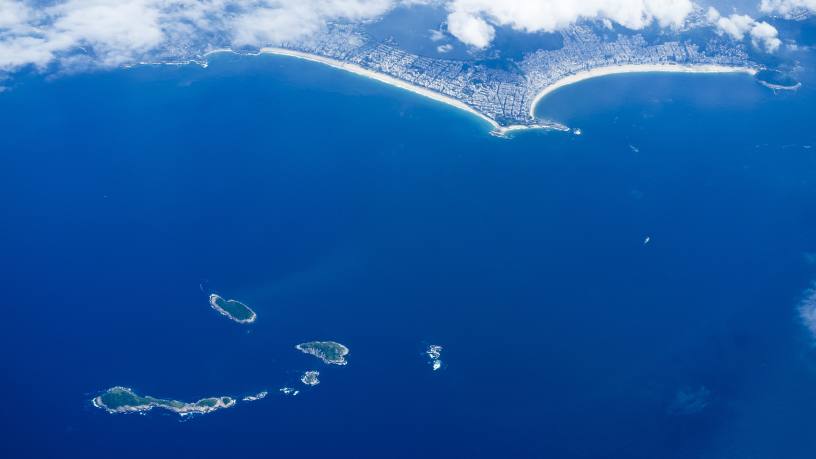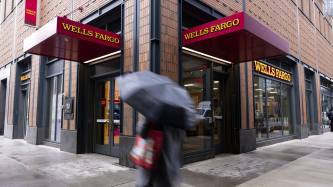At a glance
- Latin America will lead blue bond issuance this year after the region issued nearly half of global blue bonds in 2023
- Though on the rise, blue bonds face issuance barriers and still represent a small fraction of the total global sustainable bond market
- Clearer guidance and principles, as well as improved understanding about ocean ecosystems, could encourage investment and expand the scope of blue bond projects
In the nascent asset class of blue bonds, where proceeds are typically earmarked for ocean-friendly projects and critical clean water resources protection, Latin America stands out.
Last year, it was the biggest market for blue bonds, accounting for almost half (49.1 per cent) of total issuance, according to S&P Global data. The $2bn-worth of blue bonds issued in the region last year were mainly in the sanitation sector. This year will see Panama’s stock exchange, Latinex, list its first blue bond.
Elizabeth Beall, managing director at Finance Earth, says Latinex’s plans for a regional blue bond stem from the recognition that there is a need for more regional co-operation and shared initiatives.
Approximately 60 per cent of all blue bonds were issued last year, according to S&P Global, with total issuance in 2023 reaching $6.8bn. But blue bonds are still a tiny fraction — just 0.2 per cent — of overall global green, social, sustainable and sustainability-linked bond issuances. Total GSSSB issuance in Latin America is projected to reach between $45bn and $55bn this year, according to S&P Global, after reaching a record high of $55bn in 2023. Countries such as Brazil, Chile and Mexico are expected to remain the region’s leaders in terms of issuance.
Why are blue bonds so popular in Latin America?
Janine Dow, head of LatAm at Sustainable Fitch, says the transition required from polluting industries, together with increasing recognition about the region’s deep ecological characteristics, is driving issuance of green bonds, and subsequently blue bonds.
Latin America has a coastline that extends over 70,000km, and with 25 per cent of its population and 100 per cent of the Caribbean’s living on the coast, the blue economy, which the World Bank defines as the sustainable use of ocean resources for economic growth, is seen as essential for sustainable business in the region.
“There is a preoccupation with protecting and looking after the region’s biodiversity which is reflected in various national taxonomies, like Colombia’s and Mexico’s,” says Dow. “There is very much a focus on, ‘why are we doing this, why do we care about these labelled bonds, green or blue?’”
Yet since 2018, when the world’s first sovereign blue bond was issued by the Seychelles, challenges such as standardisation and ensuring funds are used for eligible purposes have remained a barrier to growth.
Analysts say clear and quantifiable metrics are needed to assess the effectiveness of blue bonds, as well as improved understanding and adequate taxonomies.
“Investors like to have a menu of eligible projects that [they can] pick from quite clearly and then say, ‘This is aligned, this is clearly eligible’,” says Dow. “We don't have that at the moment.”
Read more
Lack of standards and principles
As the GSSSB market matures, issuers and investors are looking to finance a wider range of projects that may not fit into conventional categories, such as blue bonds, S&P Global reports.
Last year, the International Capital Market Association issued guidance to help define blue economy typology and eligibility criteria, suggesting key performance indicators and highlighting case studies from the field.
But a lack of formal blue bond standards and principles, which other categories of sustainable bonds have, is hindering blue bond issuance, says Dow.
Investors are looking for more clarity, she adds. Guidance from ICMA, which remains voluntary, does not “spell out” the reporting requirements, eligible categories for investment, or what investors must do. The World Bank’s International Finance Corporation has released blue bond guidance to direct its own investments.
“Whenever there’s a bit of nebulousness, sometimes investors get a bit shy because they’re not really sure if they’re investing in a category that’s acceptable to anyone other than the issuer,” adds Dow.
Less investor engagement may also reflect a “scarcity of in-house expertise on the environmental and social impacts of the deterioration of ocean ecosystems”, according to a Sustainable Fitch report. Improved expertise could enable the development of an actionable investment framework.
Sustainable Fitch describes a “hitherto regulatory void in the high seas” which reflects limited corporate disclosures and instead, an emphasis on atmospheric climate change mitigation.
Scope for potential investments in biodiversity — and what biodiversity entails — adds to these complexities, says Jingwei Jia, associate director at Sustainable Fitch. “It’s more complicated than just measuring absolute carbon emissions.”
While there is a lot of interest in blue bonds, Beall says there are not enough investment-ready projects that can meet the range of criteria across the environmental, social and economic factors of financing water-related initiatives.
But by expanding eligibility criteria and frameworks, IDB Invest, the private sector arm of the Inter-American Development Bank, says blue bonds can also fund business opportunities that positively affect the ocean and support sustainable development. The capital needed to finance the transformation to a sustainable ocean economy is readily available, according to IDB Invest, with $90tn projected to be invested over the coming decade on infrastructure alone, the majority on or near the ocean.
In 2021, IDB Invest and the UN Global Compact released a report, Accelerating Blue Bonds Issuances in Latin America and the Caribbean, to introduce private companies in the region to the growing blue bonds market, and the sustainable use of oceans.
But for blue bond issuance to increase, Beall says work is needed to better support project developers and blue economy sectors to “really understand what the criteria are”, as well as to develop projects in a way that enables access to blue bond finance.
More understanding on the social indicators for the blue economy is one key “missing piece” that Finance Earth is looking to address, she adds.
S&P Global predicts that advancements in taxonomies could spur more issuance in the region’s sustainable bond market, blue or otherwise.









